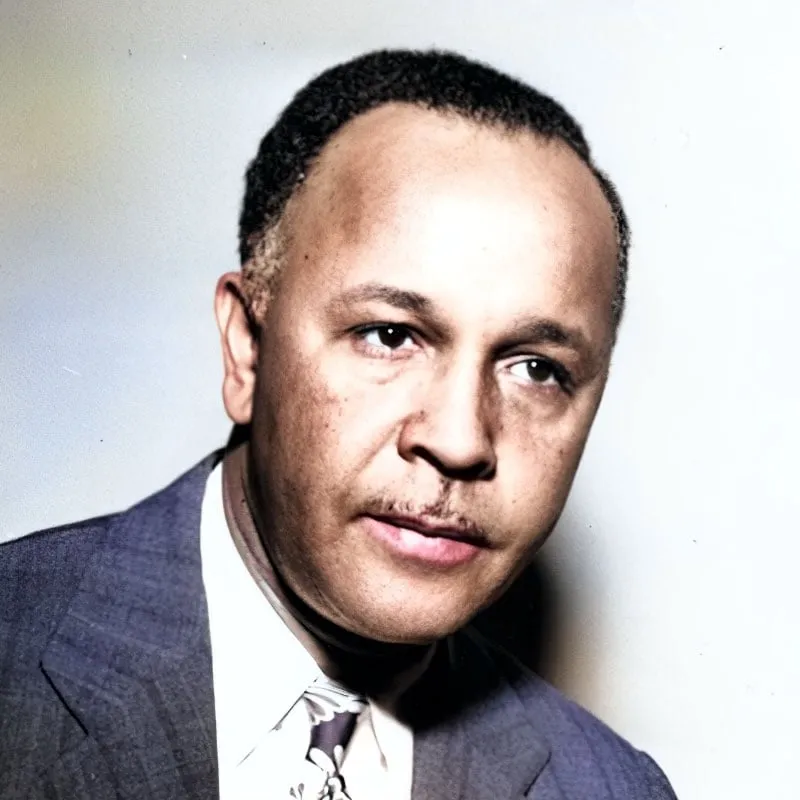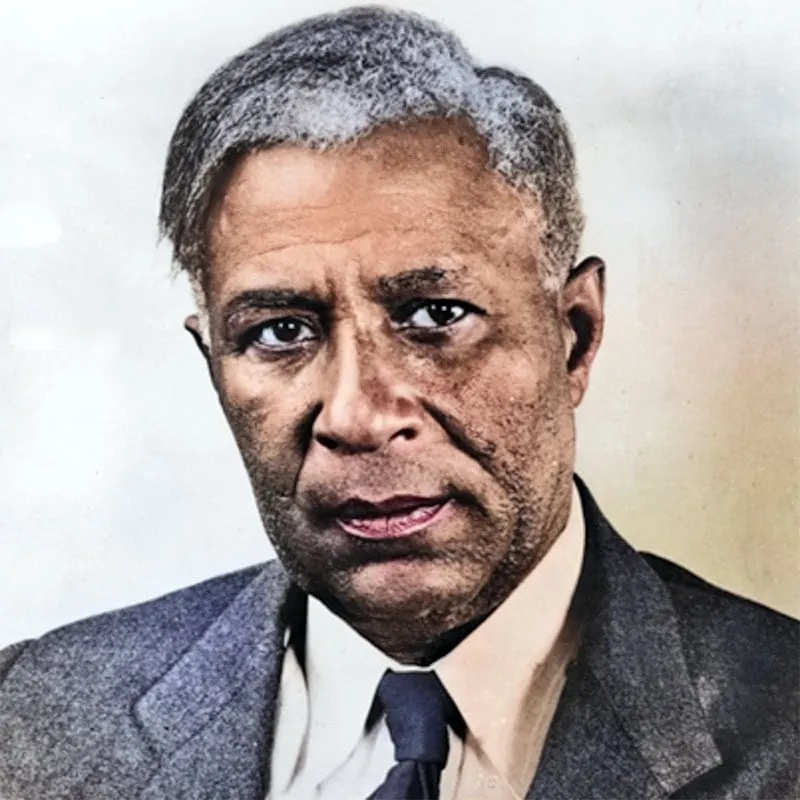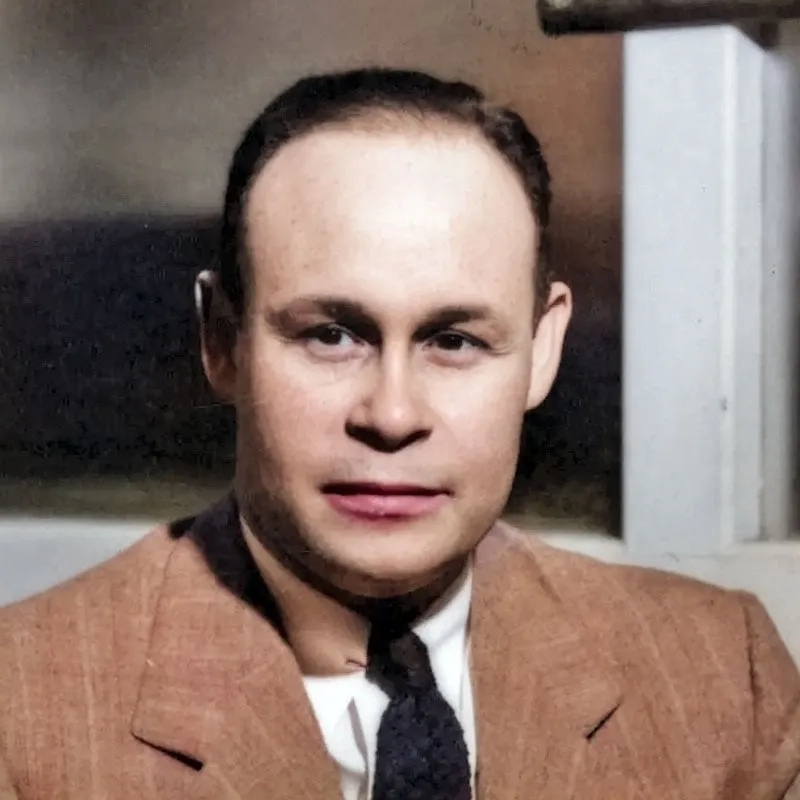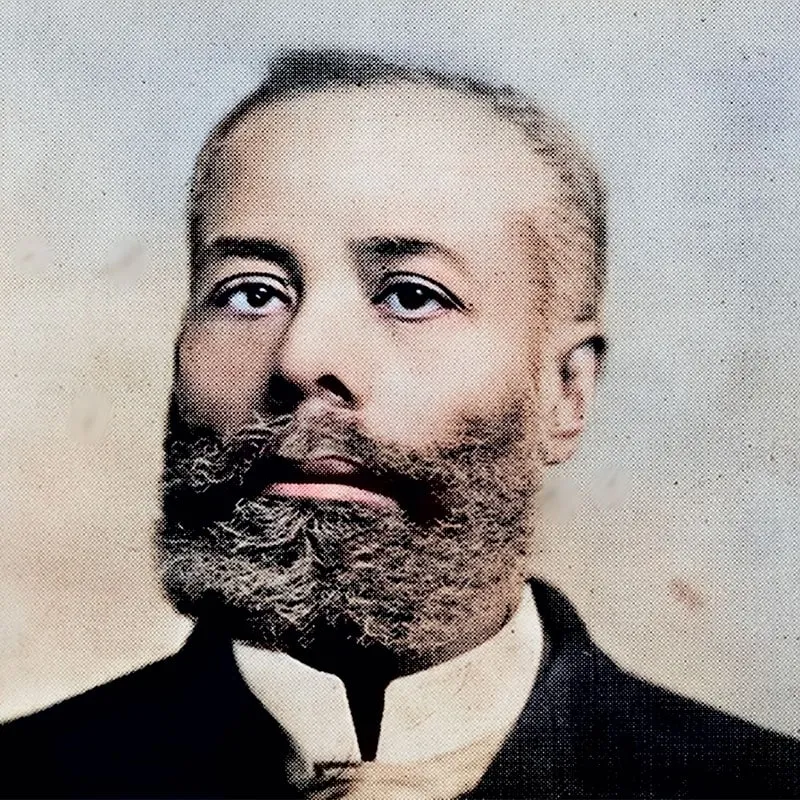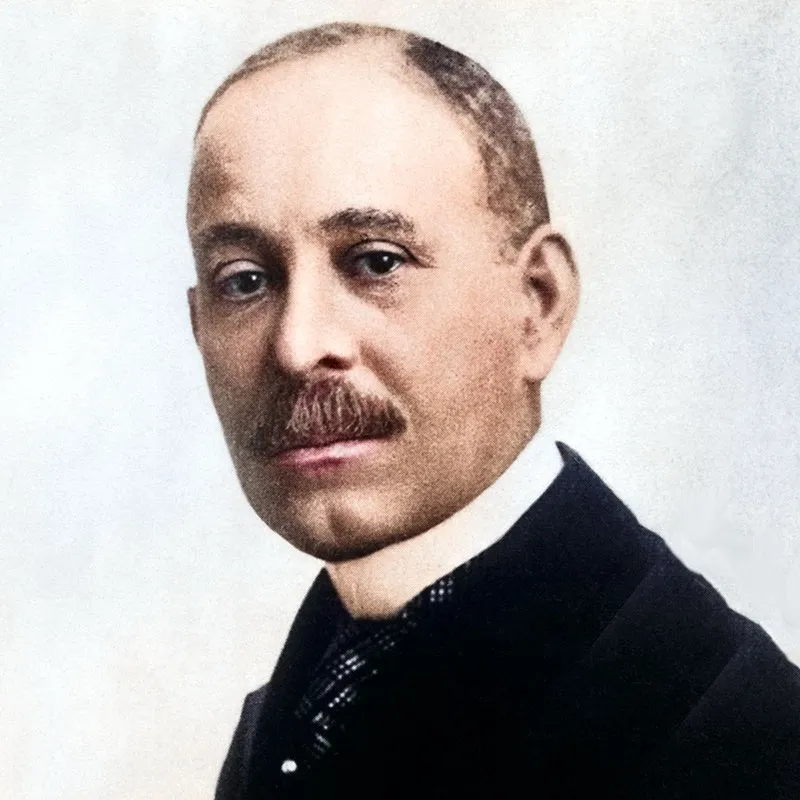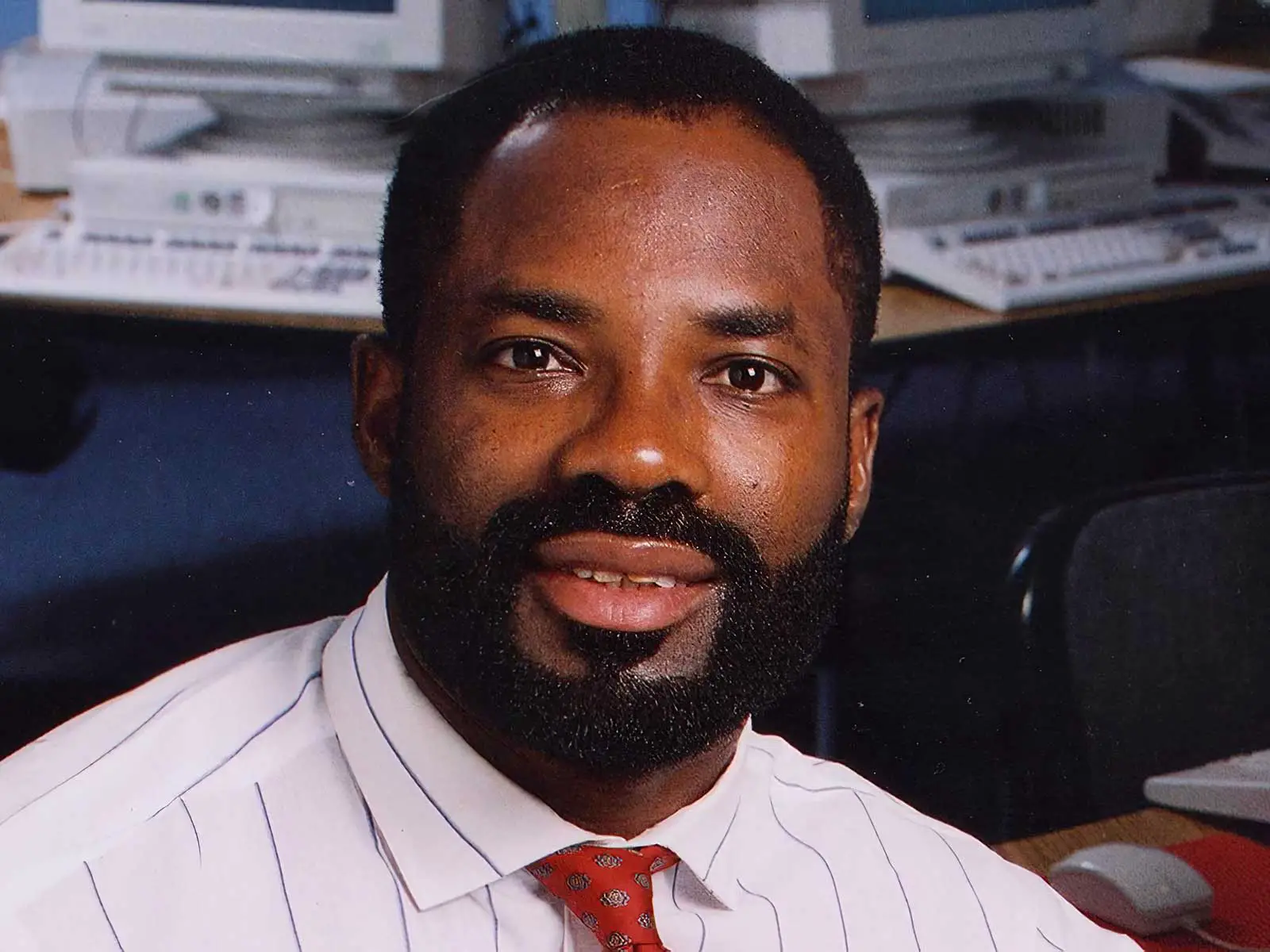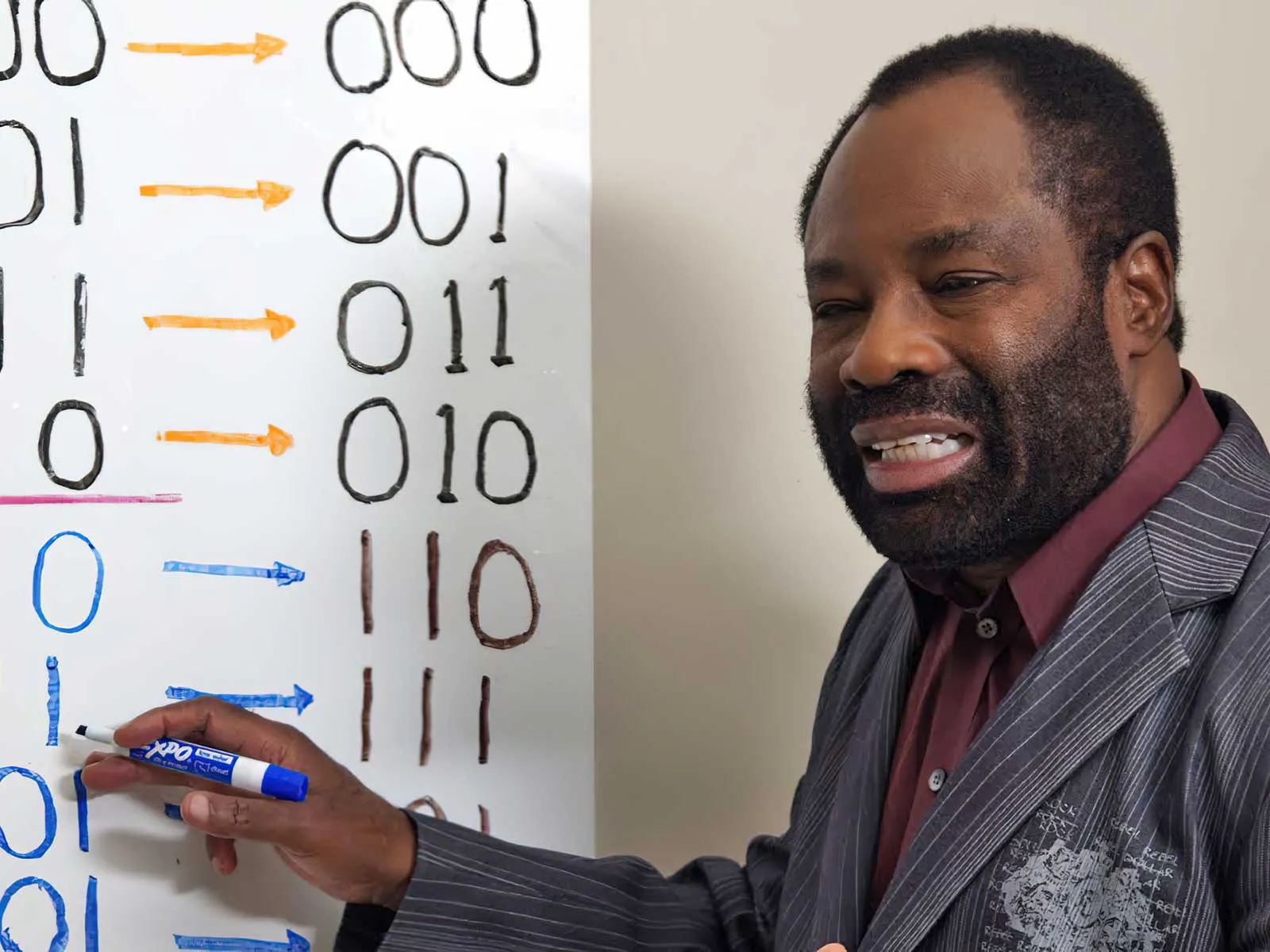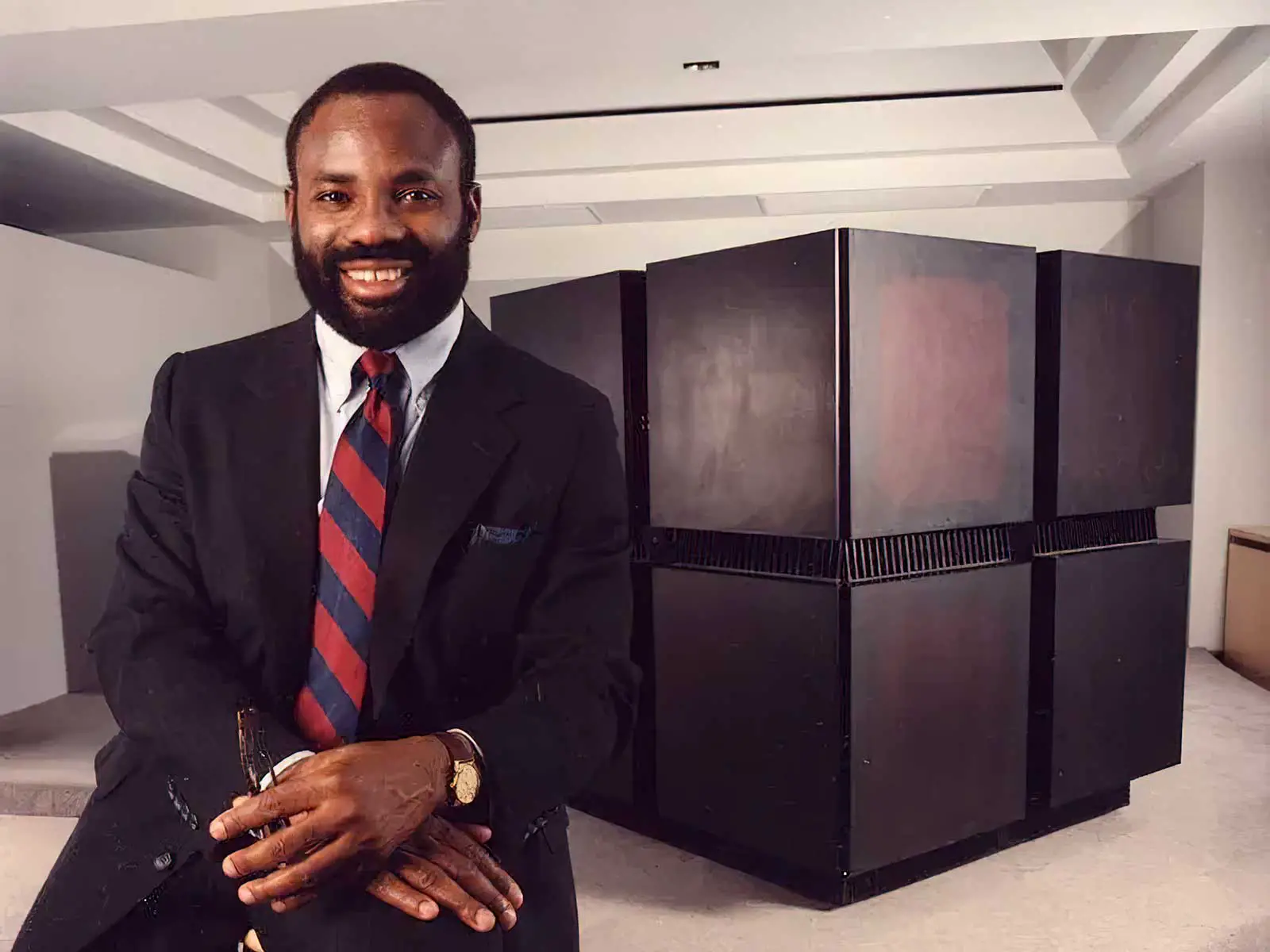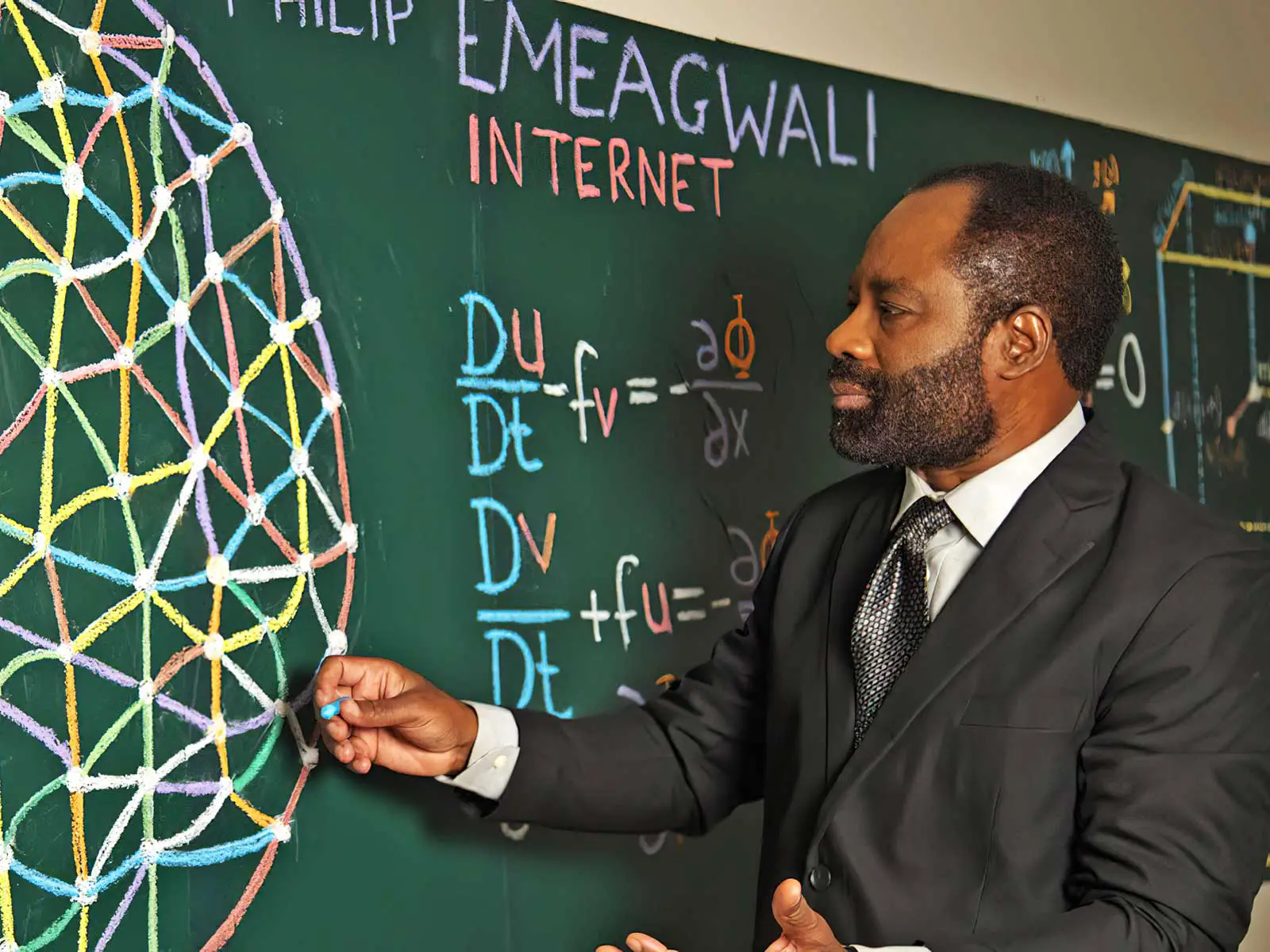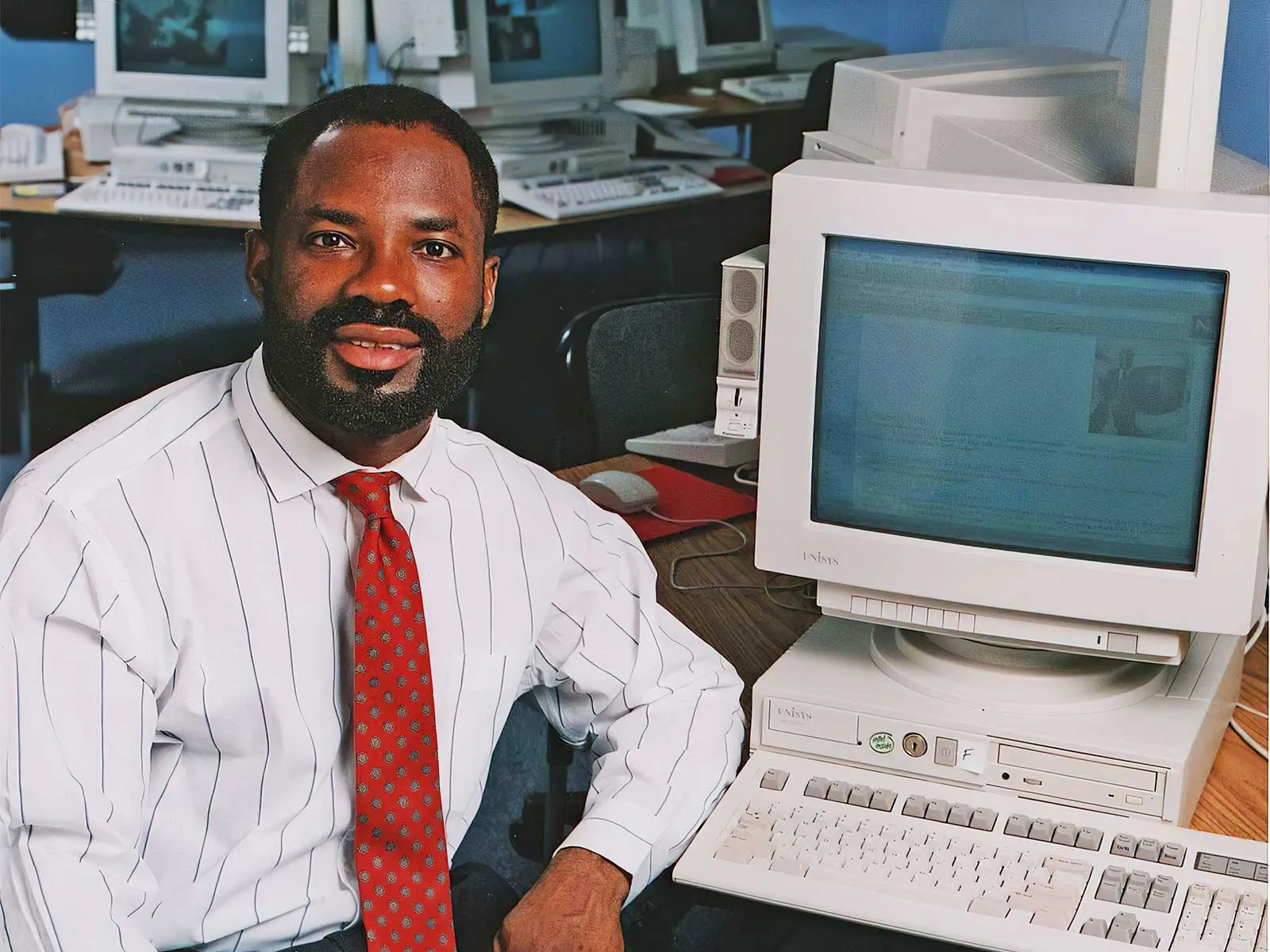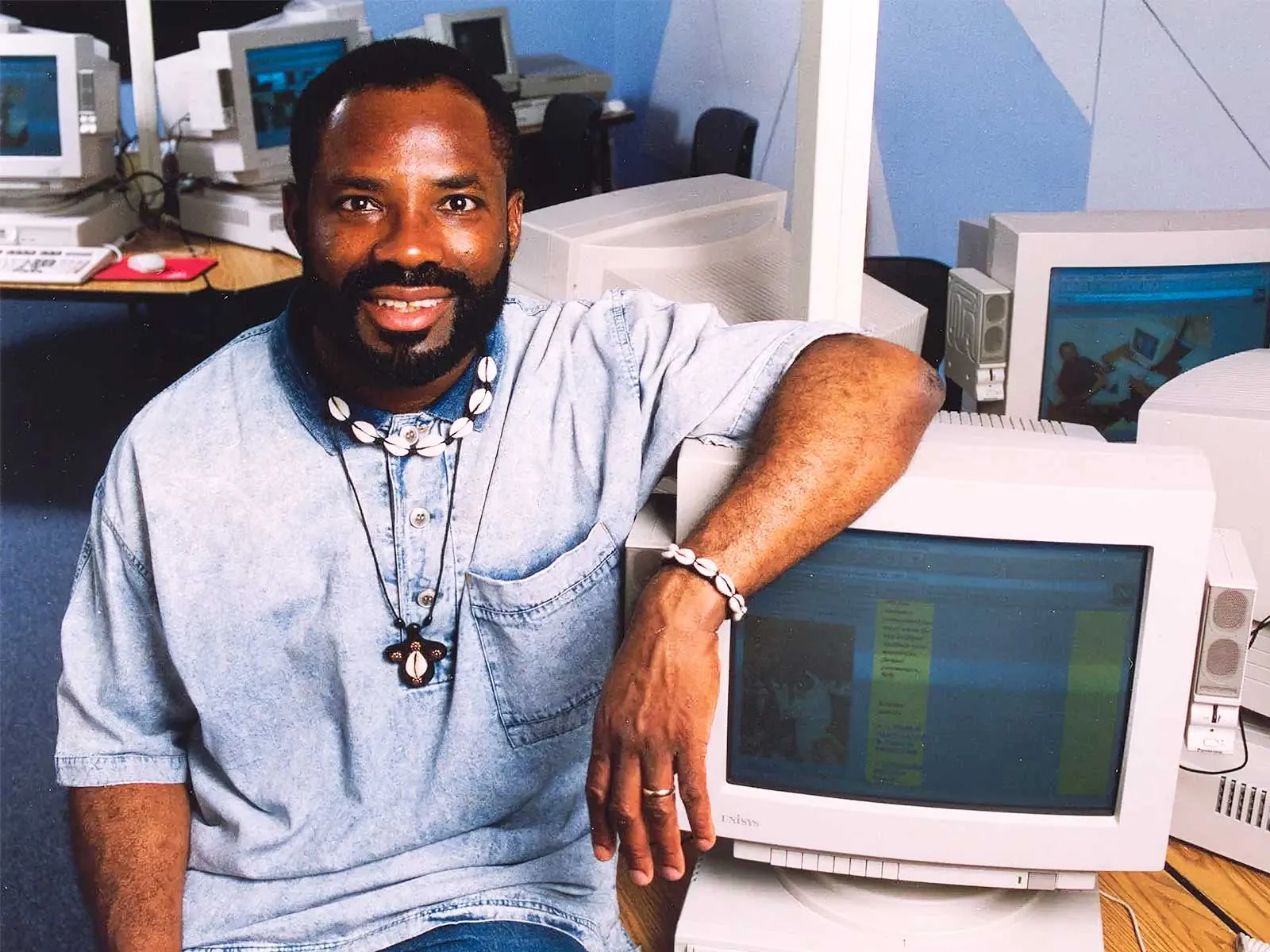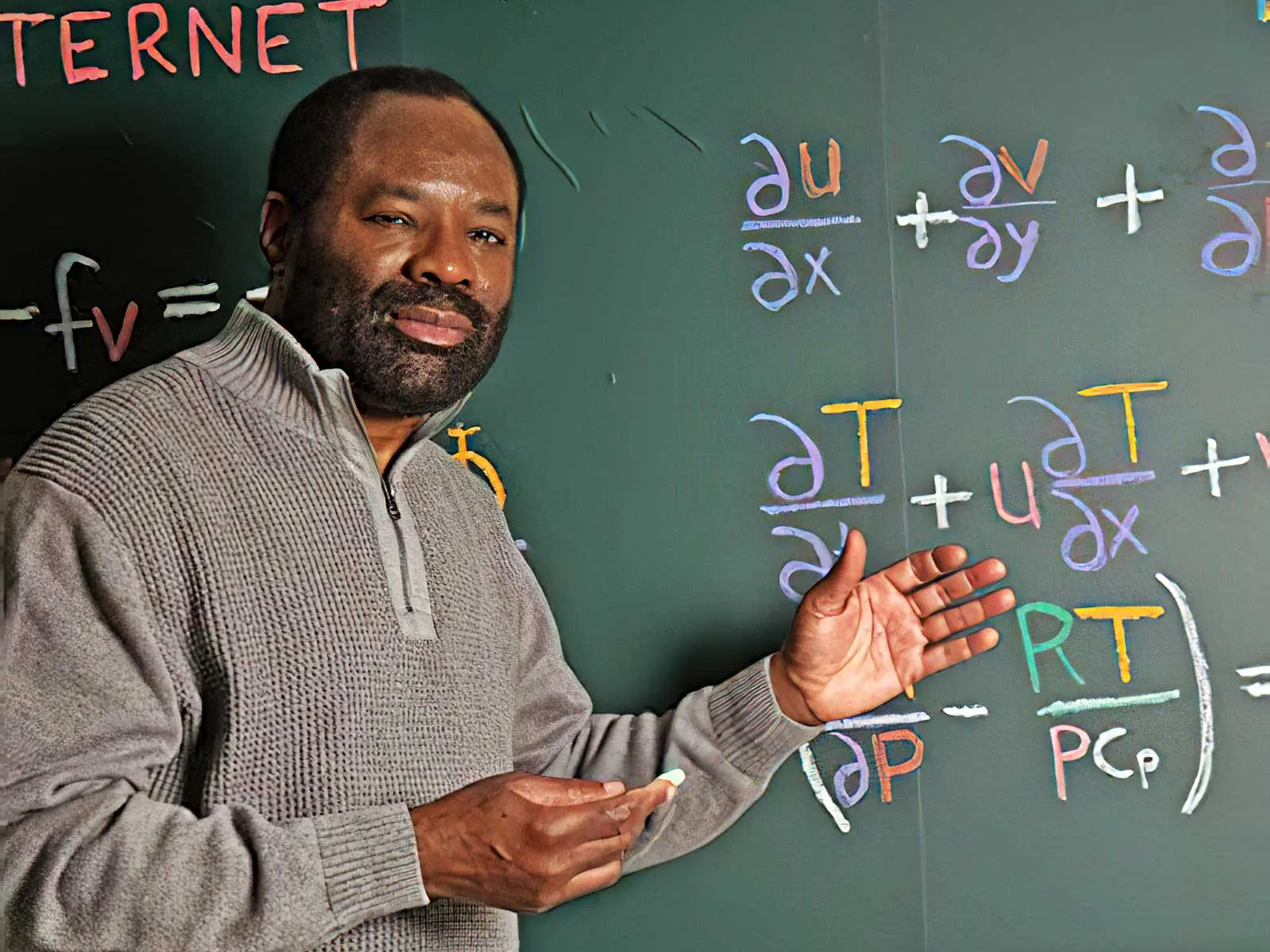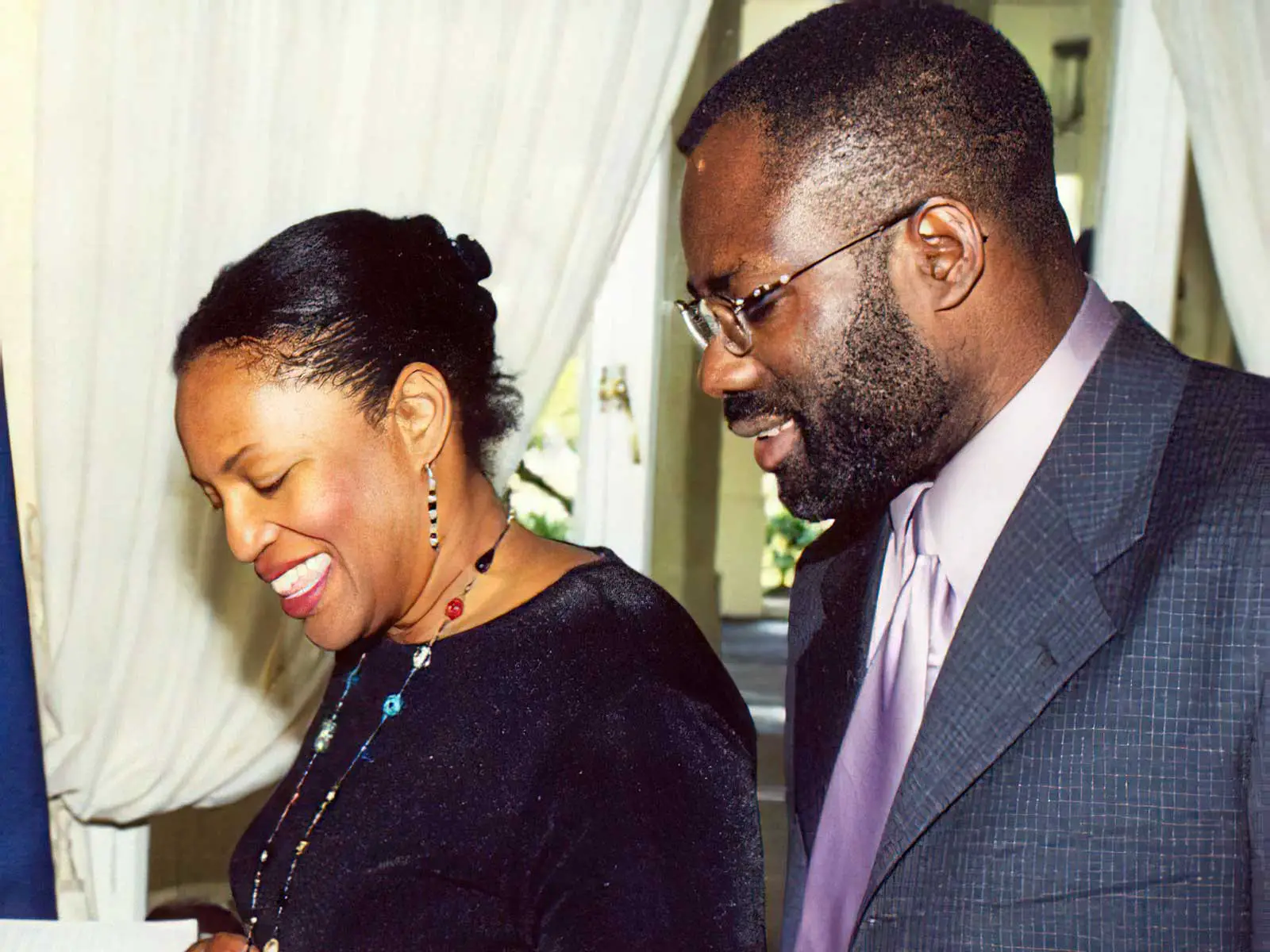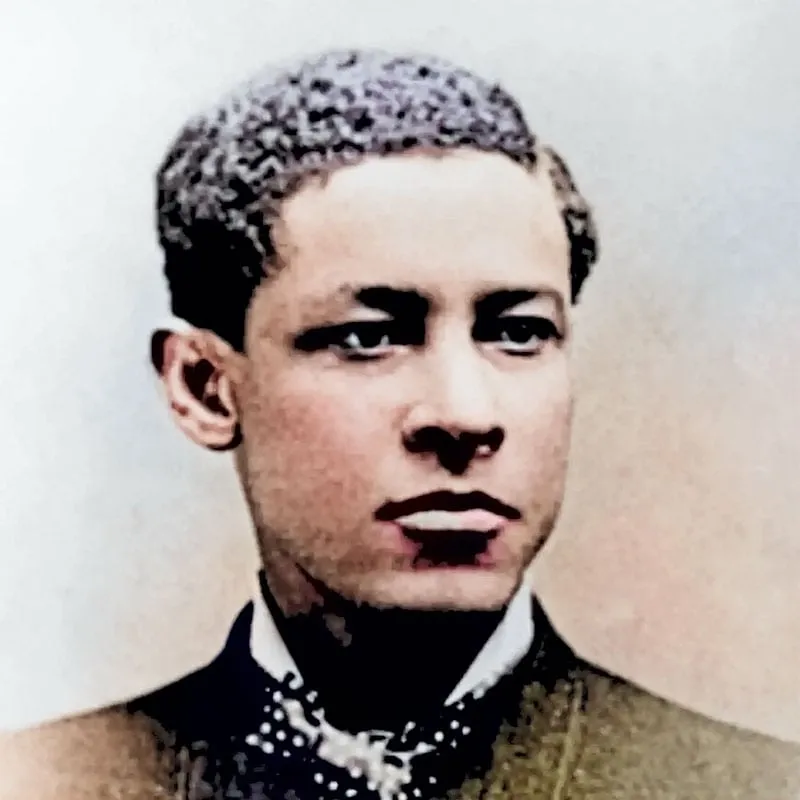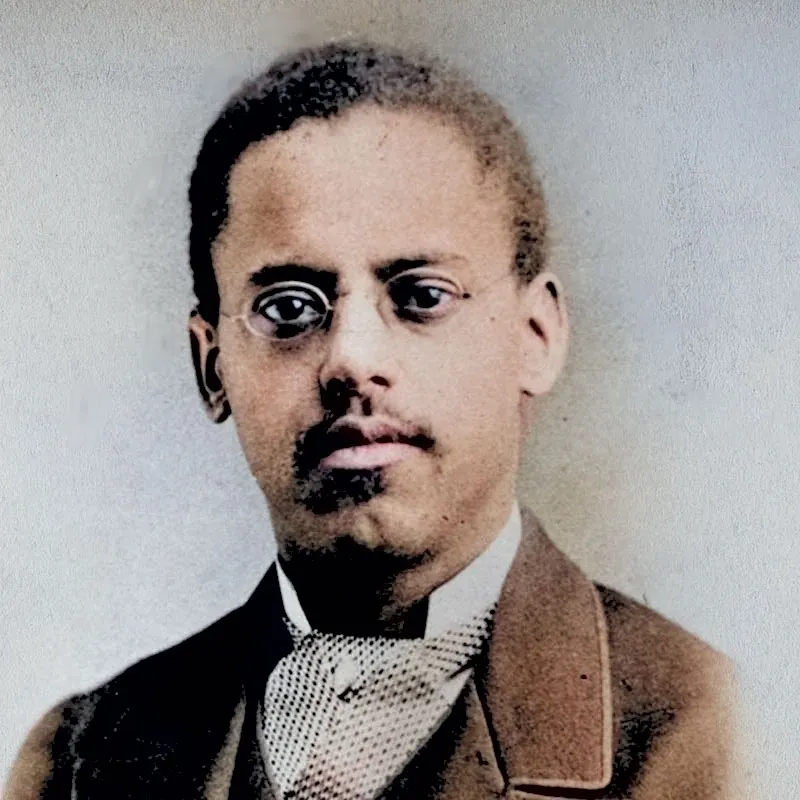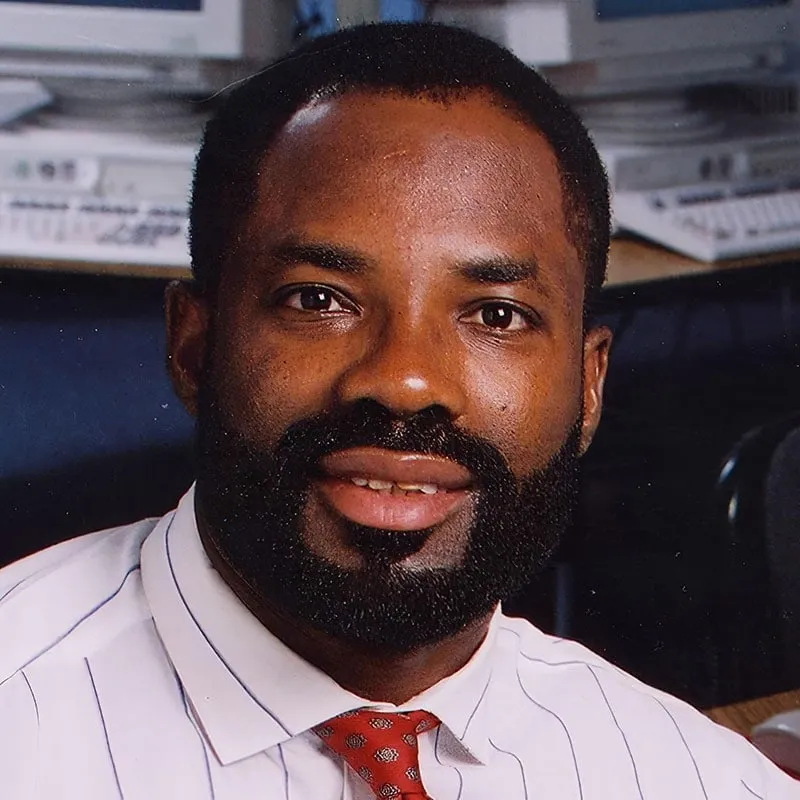
Philip Emeagwali
Created Processes to Innovate Internet Apps
 The early life of Philip Emeagwali seemed destined for povertyin his native land of Nigeria. He was the oldest of nine children and his father, who worked as a nurse’s aide, earned only a modest income. As a result, at age 14, Philip was forced to drop out of school in Onitsha. Because he had shown such great promise in mathematics, his father encouraged him to continue learning at home. Every evening, Philip’s father would quiz him in math as well as other subjects. He would ask these questions in a rapid-fire manner, prompting Philip to think quickly on his feet. Eventually, Philip was tasked to answer 100 question in an hour, which to his father’s delight, he succeeded in. Unable to attend school, Philip instead journeyed to the public library, spending most of his day there. He sped through books appropriate for his age and moved up to college-level material, studying mathematics, chemistry, physics and English. After a period of study, he applied to take the General Certificate of Education exam (a high-school equivalency exam) through the University of London and he passed it easily.
The early life of Philip Emeagwali seemed destined for povertyin his native land of Nigeria. He was the oldest of nine children and his father, who worked as a nurse’s aide, earned only a modest income. As a result, at age 14, Philip was forced to drop out of school in Onitsha. Because he had shown such great promise in mathematics, his father encouraged him to continue learning at home. Every evening, Philip’s father would quiz him in math as well as other subjects. He would ask these questions in a rapid-fire manner, prompting Philip to think quickly on his feet. Eventually, Philip was tasked to answer 100 question in an hour, which to his father’s delight, he succeeded in. Unable to attend school, Philip instead journeyed to the public library, spending most of his day there. He sped through books appropriate for his age and moved up to college-level material, studying mathematics, chemistry, physics and English. After a period of study, he applied to take the General Certificate of Education exam (a high-school equivalency exam) through the University of London and he passed it easily.
Entrepreneur
Having achieved this success, he decided to apply to colleges in Europe and the United States and at age 17 was offered a scholarship by Oregon State University in the United States. He began his studies at Oregon State in 1974 and received a Bachelor Degree in Mathematics in 1977. He then moved to the Washington, D.C. area and received a Master’s Degree in Environmental Engineering from George Washington University in 1981 and a second Master’s Degree in Applied Mathematics from the University of Maryland in 1986. During the same period of time he received another Master’s Degree from George Washington University, this time in Ocean, Coastal and Marine Engineering. He worked for a period of time as a civil engineer in Maryland and Wyoming, but his real success was yet to come.
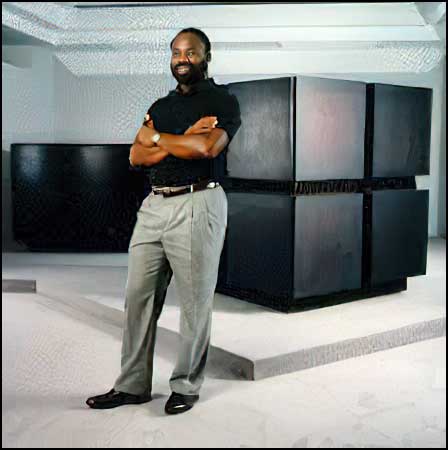 In 1987, the Emeagwali was accepted into the University of Michigan’s Civil Engineering doctoral program and received a doctoral fellowship. At the time, in the United States, the government and many in academia contended that there were 20 Grand Challenges that faced the world in the areas of science and engineering. One of these challenges was petroleum reservoir simulation. In the petroleum industry, oil is generally found within underground rocks in reservoirs. The oil is extracted by drilling down into the rock and extracting the oil but because of the uncertainties of locating the pocket of oil, industry experts could only confidently hope to extract 10 percent of the oil within a known reservoir and that was done by utilizing supercomputers (which could cost upwards of $30 million) to simulate oil fields and anticipate the flow of the oil therein. In order to extract the oil, water or gas must be pumped into the field to force it upwards. Unfortunately, if done incorrectly, the oil could be forced into an inaccessible pocket and the natural oil flow could be interrupted, thus forcing the oil company to commence drilling again, at considerable expense. Emeagwali, having grown up in Nigeria which boasted grand oil reservoirs., understood that at the time, with oil selling for $20.00 per barrel, just a one percent increase in production from a 20 billion barrel field would result in another $400 million yield, a staggering amount. As part of his doctoral dissertation, he decided to take on the challenge.
In 1987, the Emeagwali was accepted into the University of Michigan’s Civil Engineering doctoral program and received a doctoral fellowship. At the time, in the United States, the government and many in academia contended that there were 20 Grand Challenges that faced the world in the areas of science and engineering. One of these challenges was petroleum reservoir simulation. In the petroleum industry, oil is generally found within underground rocks in reservoirs. The oil is extracted by drilling down into the rock and extracting the oil but because of the uncertainties of locating the pocket of oil, industry experts could only confidently hope to extract 10 percent of the oil within a known reservoir and that was done by utilizing supercomputers (which could cost upwards of $30 million) to simulate oil fields and anticipate the flow of the oil therein. In order to extract the oil, water or gas must be pumped into the field to force it upwards. Unfortunately, if done incorrectly, the oil could be forced into an inaccessible pocket and the natural oil flow could be interrupted, thus forcing the oil company to commence drilling again, at considerable expense. Emeagwali, having grown up in Nigeria which boasted grand oil reservoirs., understood that at the time, with oil selling for $20.00 per barrel, just a one percent increase in production from a 20 billion barrel field would result in another $400 million yield, a staggering amount. As part of his doctoral dissertation, he decided to take on the challenge.
Percy Julian
A pioneer in the chemical synthesis of medicinal drugs from plants, including a synthetic form of cortisone
Charles Drew
A pioneer in the field of blood transfusions who developed improved techniques for blood storage.
Elijah McCoy
Invented lubrication systems for steam engines. His devices were referred to as “The Real McCoy.”
Emeagwali had read a 1922 science fiction article written by Lewis Fry Richardson entitled “Weather prediction by numerical processes” which suggested using 64,000 mathematicians do weather forecasting for the entire planet. Based on this article and on the work of German mathematician Paul Fillunger and Russian mathematician B. K. Risenkampf (in partial differential equations), Emeagwali determined that rather than using a supercomputer that used 8 processors, he would instead use 65,536 microprocessors (a microprocessor is basically what is found in desktop computers) to work the necessary computations. He based his decision on an old premise that a large number of chickens, if coordinated in strength and efficiency, will be able to do a better job than a small number of oxen.
Thus, his 65,536 microprocessors would work together as chickens and theorized that the could outwork the eight processor (eight oxen) supercomputer. He originally theorized that the 64,000 processors could be used instead of mathematicians to predict the Earth’ weather, but then decided to turn his theory towards the petroleum reservoir simulation.The obvious problem was how to gain access to that many computers and how to connect them. Instead he turned to the Connection Machine, a device developed by a company called Thinking Machines.
The machine was designed such that it could contain within it up to 65,536 microprocessors interconnected, each with its own RAM and each processing one bit at a time. Emeagwali found that there was a Connection Machine at the Los Alamos National Laboratory (NANL) in New Mexico. Scientists were having a difficult time programming the computer to simulate nuclear blasts and it sat unused for much of the time. He submitted an application and NANL approved his use the their Connection Machine which he accessed remotely through the Internet from Michigan. After setting the parameters, Emeagwali ran his program and was astounded when the machine was able to perform 3.1 billion calculations per second. The program had also determined the amount of oil in the simulated reservoir, the direction of flow and the speed at which it was flowing at each point. The impact of his experiment was immense. By discovering a practical application for utilizing supercomputers, he opened up a whole new market for them. Just seven years later it was estimated that 10 percent of massively parable computers had been purchased by the petroleum industry. Furthermore, it provided the theory of connecting computers around the world to provide a scalable, network through which to share and process information. Using this concept in conjunction with the existing internet backbone, the world wide web would emerge as an new entity for providing communications and enhancing commerce. In 1989, in acknowledgement of his discovery, Emeagwali was awarded the Institute of Electrical and Electronics Engineers (IEEE) Gordon Bell Prize which recognizes outstanding achievement in high-performance computing applications.
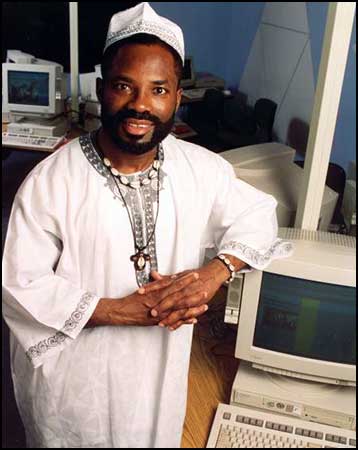 Encouraged by his success and newly found status, Emeagwali moved forward with further research and provided new theories and concepts for computer design. Many of these were based on the idea that computers were simply an extension of the function of nature and thus that they should be designed based on nature. One of his theories is aimed at exploring long-term effects of greenhouse gases and global warming. Emeagwali offered a new design for a computer based on honeycombs. Based on the theory of tessellated models, Emeagwali broke the Earth’s atmosphere into sections that resembled honeycombs created by bees. He reasoned that bees are able to use the most efficient methods to develop their honeycombs and that following principles of honeycomb design in a computer will allow it to work in an optimal fashion. He believes that his hyperball computer will allow for weather forecasting far into the future and for simulated global warming trends in order to address the problem.
Encouraged by his success and newly found status, Emeagwali moved forward with further research and provided new theories and concepts for computer design. Many of these were based on the idea that computers were simply an extension of the function of nature and thus that they should be designed based on nature. One of his theories is aimed at exploring long-term effects of greenhouse gases and global warming. Emeagwali offered a new design for a computer based on honeycombs. Based on the theory of tessellated models, Emeagwali broke the Earth’s atmosphere into sections that resembled honeycombs created by bees. He reasoned that bees are able to use the most efficient methods to develop their honeycombs and that following principles of honeycomb design in a computer will allow it to work in an optimal fashion. He believes that his hyperball computer will allow for weather forecasting far into the future and for simulated global warming trends in order to address the problem.In addition to the aforementioned concept, Emeagwali has created hundreds more. He has lectured around the world and been lauded by for his achievements. He was named the Pioneer of the Year by the National Society of Black Engineers, as well as Scientist of the Year in 1991, the Computer Scientist of the Year by America’s National Technical Association in 1993 along with dozens of other tributes.
For someone who was born with little, Philip Emeagwali was able to achieve a lot and has served as an inspiration to millions of people, especially in Nigeria. Former United States President Bill Clinton summed up worldwide sentiment by declaring Emeagwali “One of the great minds of the Information Age.”
Videos About Philip Emeagwali
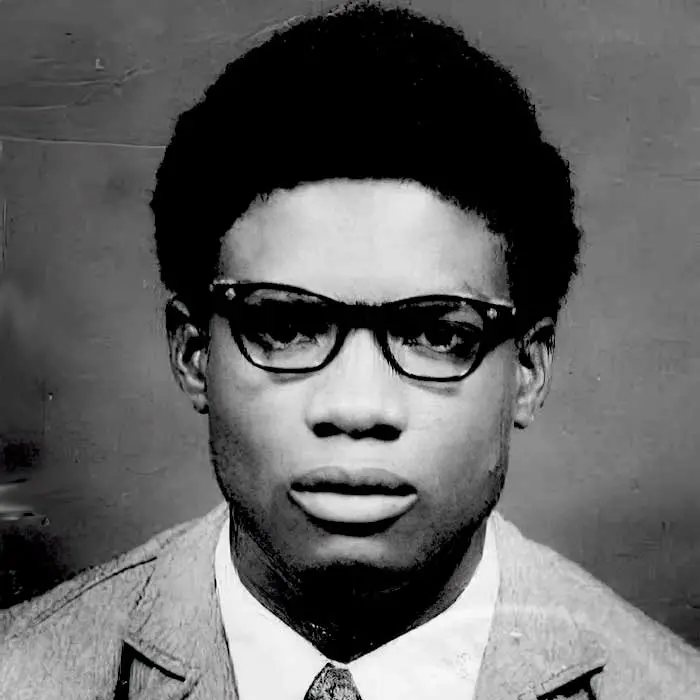
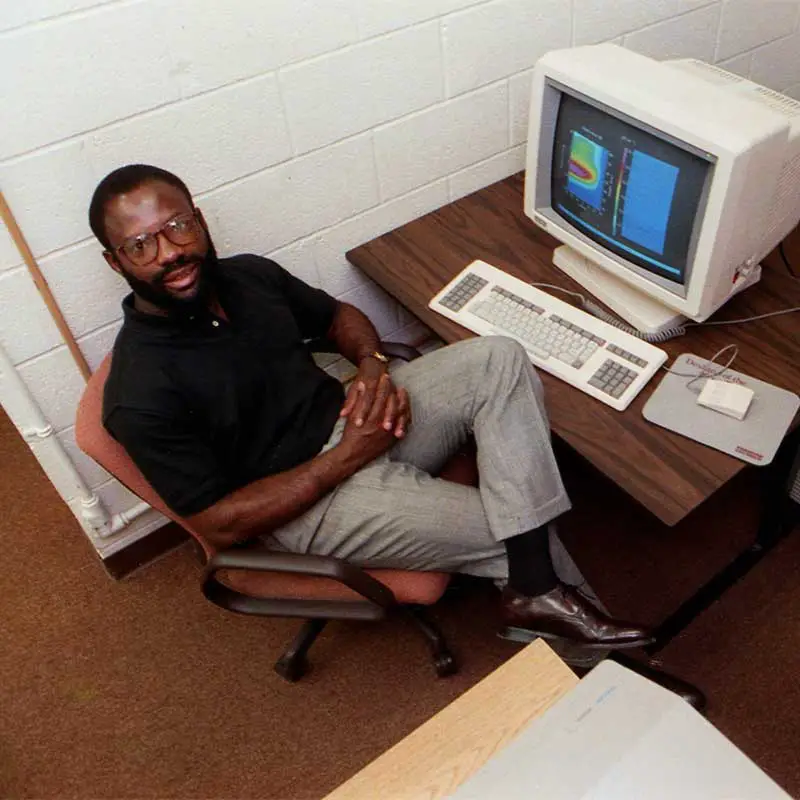
From Dreams Comes Success
Walker remembered that the formula for her hair grower came to her in a dream: “God answered my prayer, for one night I had a dream, and in that dream a big Black man appeared to me and told me what to mix up for my hair. Some of the remedy was grown in Africa, but I sent for it, mixed it, put it on my scalp, and in a few weeks my hair was coming in faster than it had ever fallen out. I tried it on my friends; it helped them. I made up my mind I would begin to sell it.”

Philip Emeagwali Items

